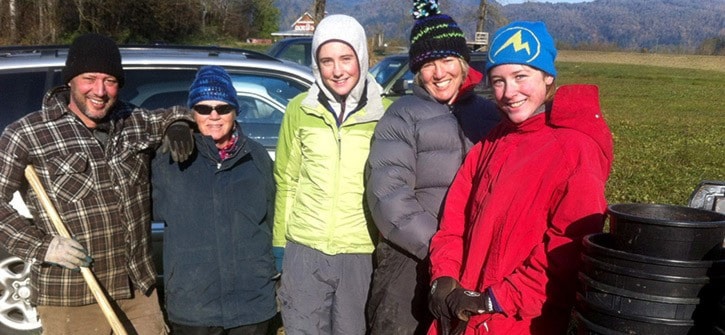Mother nature provided a rare day of autumn sunshine last weekend as two dozen volunteers met on Agassiz Slough to plant 1,500 native trees and shrubs, including everything from Sitka spruce, red alder and Pacific willow to nine-bark, red flowering current and wild rose.
The planting rounds out a restoration project led by local biologist Dr. Mike Pearson, aimed at improving water quality, drainage and fish habitat along the lower end of Agassiz Slough.
The first phase of the project involved using an excavator to pull out thick mats of reed-canary grass and tons of muck that were choking the channel. This material was trucked to a neighbouring farm field and dumped in several low spots. The result is an open, free-flowing waterway better suited to fish, including trout, salmon and the endangered Salish Sucker.
The purpose of the planted trees and shrubs is to keep the channel open by shading out reed canary grass and other sun-loving invasive species like Himalayan blackberry and morning glory. The plants will also hold soil along the banks, filter runoff from Tuyttens Road, and provide habitat for many other species that depend on ‘riparian’ areas.
The project was funded mainly by the provincial environment ministry but also the District of Kent, which provided a dump truck, some manpower and the plant material.
Pearson decided to go ahead with the restoration project after several years of monitoring in Agassiz Slough, which showed that fish find refuge there during the spring freshet, despite a hard-to-navigate ‘flapper gate’ at the mouth of the slough. Among the fish found were Chinook and coho salmon, rainbow and steelhead trout and hundreds of endangered Salish Sucker. Monitoring will continue next summer to document the impact of the project on fish use.
"I am very pleased with the project,” Pearson said. “And I am very hopeful that Agassiz Slough will once again provide high quality habitat all year long for salmon, trout and species at risk.”
-Article submitted by Detmar Schwichtenberg, Fraser Valley Watershed
